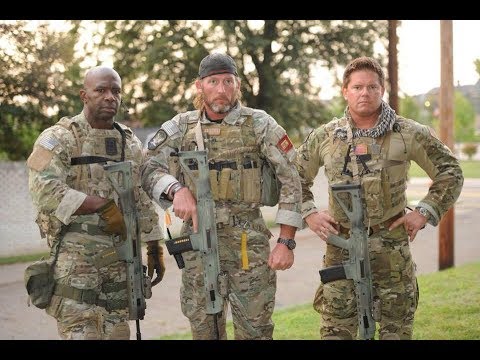The history of the United States Navy SEAL (Sea, Air, Land) teams date back to several decades. According to Stephen Varanko, one can trace back the history of this team to the very first group of volunteers who were selected from the Naval Construction Battalions in the spring of the year 1943. These volunteers were subsequently organized into certain specialized teams who were called the Navy Combat Demolition Units (NCDUs). These units were majorly given the duties reconnoitering and clearing beach obstacles for the various troops who were to go ashore during the amphibious landings, and subsequently evolved into distinct Combat Swimmer Reconnaissance Units.
Navy Combat Demolition Units has distinguished themselves during World War II, both in the Pacific and Atlantic theatres. In the year of 1947, the Navy went on to organize its very first underwater offensive strike units. These Underwater Demolition Teams or UDTs participated in multiple missions during the Korean conflict, which included demolition raids on tunnels and bridges that were accessible from the water. They also carried out certain limited minesweeping operations in rivers and harbors

Stephen Varanko points out that during the 1960s, each of the branches of the armed forces went on to form its own counterinsurgency force, and the Navy made use of the UDT personnel in order to form their very own units referred to as the SEAL teams. It was in the year of 1962 that marked the commissioning of SEAL Team ONE and TWO.
While the former was commissioned in the Pacific Fleet, the second one was in the Atlantic Fleet. Both of these teams were basically established for the purpose of carrying out clandestine operations, counter-guerilla warfare and unconventional warfare in brown, as well as blue water environments. At the same time, Naval Operations Support Groups were also developed, for the purpose of aiding the UDTs, SEALs, as well as the Boat Support and Beach Jumpers in the domains of research, development, planning and administration. These UDTs went on the perform reconnaissance missions during the Vietnam War, while the SEALs carried out a host of offensive operations.
As pointed out by Stephen Varanko it was in the year of 1983 that the existing UDTs were re designated as SEAL teams or/and SEAL Delivery Vehicle Teams. It was during this time that the requirements for hydrographic reconnaissance, as well as underwater demolition, went on to become SEAL missions. It was on April 16, 1987, that the Naval Special Warfare Command was commissioned at the Coronado base of the Naval Amphibious Base. Its mission is majorly to prepare the Naval Special Warfare in an adequate manner so that they can expertly carry out their distinguished assigned missions, and also develop skills related to special operations strategy, tactics and doctrine. The SEALs (Sea, Air, and Land) teams basically go through some of the most rigorous military training procedures in the world.


